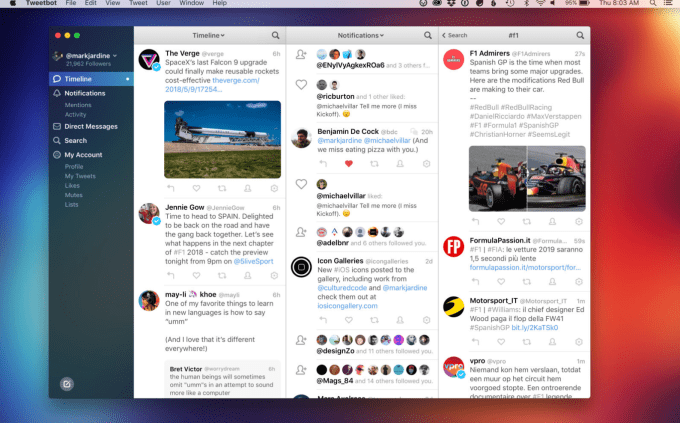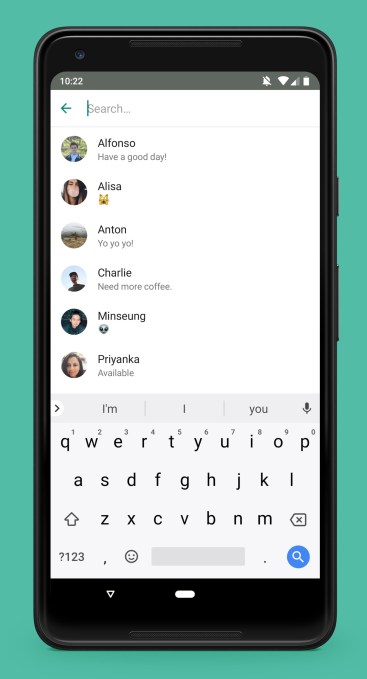Facebook has once again eschewed a direct request from the UK parliament for its CEO, Mark Zuckerberg, to testify to a committee investigating online disinformation — without rustling up so much as a fig-leaf-sized excuse to explain why the founder of one of the world’s most used technology platforms can’t squeeze a video call into his busy schedule and spare UK politicians’ blushes.
Which tells you pretty much all you need to know about where the balance of power lies in the global game of (essentially unregulated) U.S. tech platforms giants vs (essentially powerless) foreign political jurisdictions.
At the end of an 18-page letter sent to the DCMS committee yesterday — in which Facebook’s UK head of public policy, Rebecca Stimson, provides a point-by-point response to the almost 40 questions the committee said had not been adequately addressed by CTO Mike Schroepfer in a prior hearing last month — Facebook professes itself disappointed that the CTO’s grilling was not deemed sufficient by the committee.
“While Mark Zuckerberg has no plans to meet with the Committee or travel to the UK at the present time, we fully recognize the seriousness of these issues and remain committed to providing any additional information required for their enquiry into fake news,” she adds.
So, in other words, Facebook has served up another big fat ‘no’ to the renewed request for Zuckerberg to testify — after also denying a request for him to appear before it in March, when it instead sent Schroepfer to claim to be unable to answer MPs’ questions.
At the start of this month committee chair Damian Collins wrote to Facebook saying he hoped Zuckerberg would voluntarily agree to answer questions. But the MP also took the unprecedented step of warning that if the Facebook founder did not do so the committee would issue a formal summons for him to appear the next time Zuckerberg steps foot in the UK.
Hence, presumably, that addendum line in Stimson’s letter — saying the Facebook CEO has no plans to travel to the UK “at the present time”.
The committee of course has zero powers to comply testimony from a non-UK national who is resident outside the UK — even though the platform he controls does plenty of business within the UK.
Last month Schroepfer faced five hours of close and at times angry questions from the committee, with members accusing his employer of lacking integrity and displaying a pattern of intentionally deceptive behavior.
The committee has been specifically asking Facebook to provide it with information related to the UK’s 2016 EU referendum for months — and complaining the company has narrowly interpreted its requests to sidestep a thorough investigation.
More recently research carried out by the Tow Center unearthed Russian-bought UK targeted immigration ads relevant to the Brexit referendum among a cache Facebook had provided to Congress — which the company had not disclosed to the UK committee.
At the end of the CTO’s evidence session last month the committee expressed immediate dissatisfaction — claiming there were almost 40 outstanding questions the CTO had failed to answer, and calling again for Zuckerberg to testify.
It possibly overplayed its hand slightly, though, giving Facebook the chance to serve up a detailed (if not entirely comprehensive) point-by-point reply now — and use that to sidestep the latest request for its CEO to testify.
Still, Collins expressed fresh dissatisfaction today, saying Facebook’s answers “do not fully answer each point with sufficient detail or data evidence”, and adding the committee would be writing to the company in the coming days to ask it to address “significant gaps” in its answers. So this game of political question and self-serving answer is set to continue.
In a statement, Collins also criticized Facebook’s response at length, writing:
It is disappointing that a company with the resources of Facebook chooses not to provide a sufficient level of detail and transparency on various points including on Cambridge Analytica, dark ads, Facebook Connect, the amount spent by Russia on UK ads on the platform, data collection across the web, budgets for investigations, and that shows general discrepancies between Schroepfer and Zuckerberg’s respective testimonies. Given that these were follow up questions to questions Mr Schroepfer previously failed to answer, we expected both detail and data, and in a number of cases got excuses.
If Mark Zuckerberg truly recognises the ‘seriousness’ of these issues as they say they do, we would expect that he would want to appear in front of the Committee and answer questions that are of concern not only to Parliament, but Facebook’s tens of millions of users in this country. Although Facebook says Mr Zuckerberg has no plans to travel to the UK, we would also be open to taking his evidence by video link, if that would be the only way to do this during the period of our inquiry.
For too long these companies have gone unchallenged in their business practices, and only under public pressure from this Committee and others have they begun to fully cooperate with our requests. We plan to write to Facebook in the coming days with further follow up questions.
In terms of the answers Facebook provides to the committee in its letter (plus some supporting documents related to the Cambridge Analytica data misuse scandal) there’s certainly plenty of padding on show. And deploying self-serving PR to fuzz the signal is a strategy Facebook has mastered in recent more challenging political times (just look at its ‘Hard Questions’ series to see this tactic at work).
At times Facebook’s response to political attacks certainly looks like an attempt to drown out critical points by deploying self-serving but selective data points — so, for instance, it talks at length in the letter about the work it’s doing in Myanmar, where its platform has been accused by the UN of accelerating ethnic violence as a result of systematic content moderation failures, but declines to state how many fake accounts it’s identified and removed in the market; nor will it disclose how much revenue it generates from the market.
Asked by the committee what the average time to respond to content flagged for review in the region, Facebook also responds in the letter with the vaguest of generalized global data points — saying: “The vast majority of the content reported to us is reviewed within 24 hours.” Nor does it specify if that global average refers to human review — or just an AI parsing the content.
Another of the committee’s questions is: ‘Who was the person at Facebook responsible for the decision not to tell users affected in 2015 by the Cambridge Analytica data misuse scandal?’ On this Facebook provides three full paragraphs of response but does not provide a direct answer specifying who decided not to tell users at that point — so either the company is concealing the identity of the person responsible or there simply was no one in charge of that kind of consideration at that time because user privacy was so low a priority for the company that it had no responsibility structures in place to enforce it.
Another question — ‘who at Facebook heads up the investigation into Cambridge Analytica?’ — does get a straight and short response, with Facebook saying its legal team, led by general counsel Colin Stretch, is the lead there.
It also claims that Zuckerberg himself only become aware of the allegations that Cambridge Analytica may not have deleted Facebook user data in March 2018 following press reports.
Asked what data it holds on dark ads, Facebook provides some information but it’s also being a bit vague here too — saying: “In general, Facebook maintains for paid advertisers data such as name, address and banking details”, and: “We also maintain information about advertiser’s accounts on the Facebook platform and information about their ad campaigns (most advertising content, run dates, spend, etc).”
It does also confirms it can retain the aforementioned data even if a page has been deleted — responding to another of the committee’s questions about how the company would be able to audit advertisers who set up to target political ads during a campaign and immediately deleted their presence once the election was over.
Though, given it’s said it only generally retains data, we must assume there are instances where it might not retain data and the purveyors of dark ads are essentially untraceable via its platform — unless it puts in place a more robust and comprehensive advertiser audit framework.
The committee also asked Facebook’s CTO whether it retains money from fraudulent ads running on its platform, such as the ads at the center of a defamation lawsuit by consumer finance personality Martin Lewis. On this Facebook says it does not “generally” return money to an advertiser when it discovers a policy violation — claiming this “would seem perverse” given the attempt to deceive users. Instead it says it makes “investments in areas to improve security on Facebook and beyond”.
Asked by the committee for copies of the Brexit ads that a Cambridge Analytica linked data company, AIQ, ran on its platform, Facebook says it’s in the process of compiling the content and notifying the advertisers that the committee wants to see the content.
Though it does break out AIQ ad spending related to different vote leave campaigns, and says the individual campaigns would have had to grant the Canadian company admin access to their pages in order for AIQ to run ads on their behalf.
The full letter containing all Facebook’s responses can be read here.







